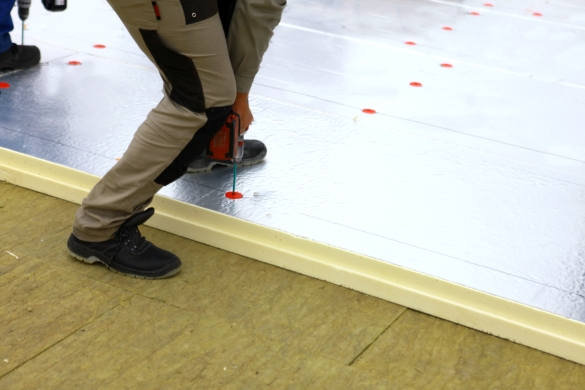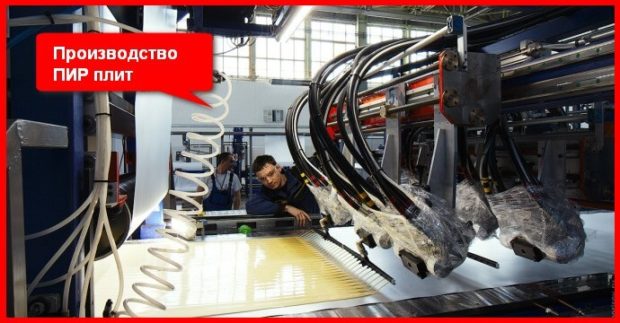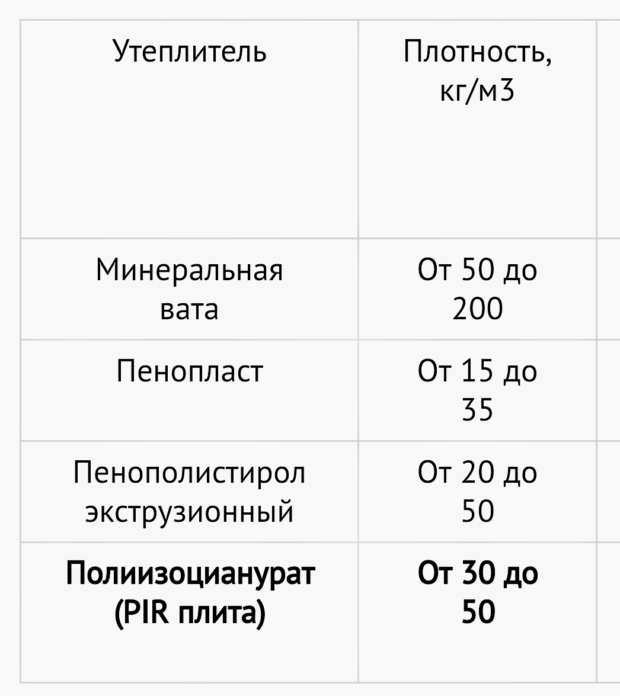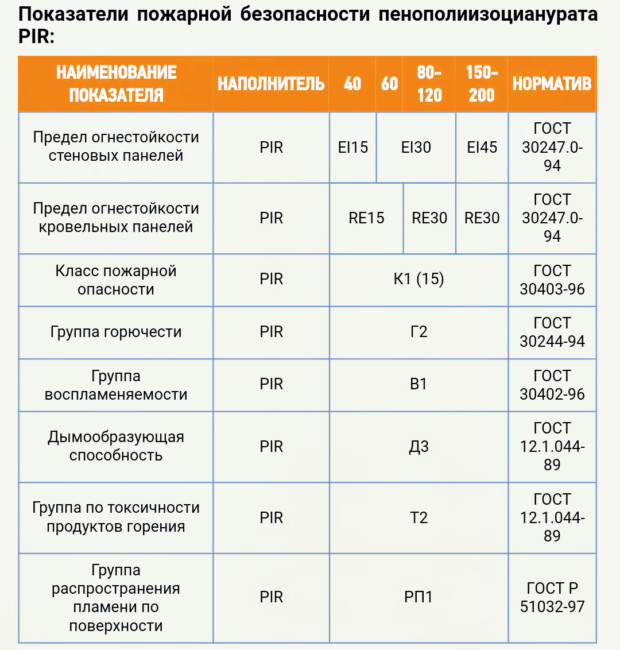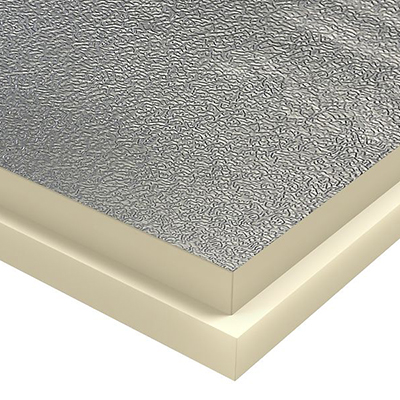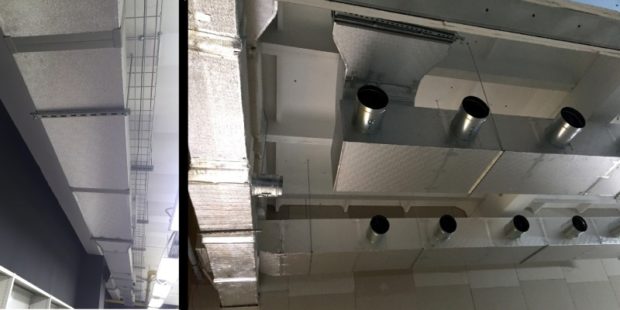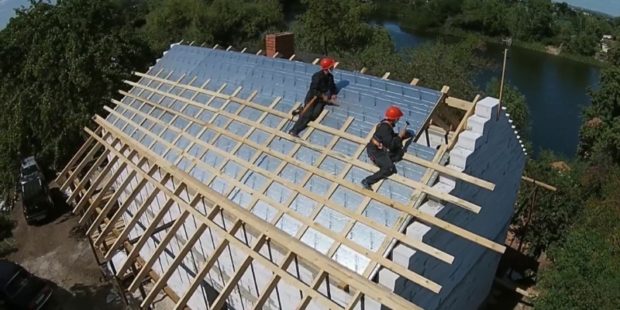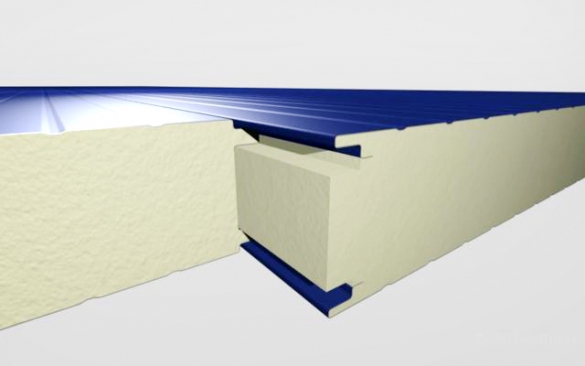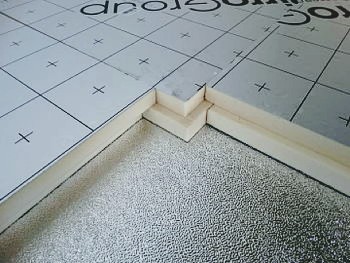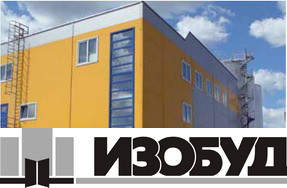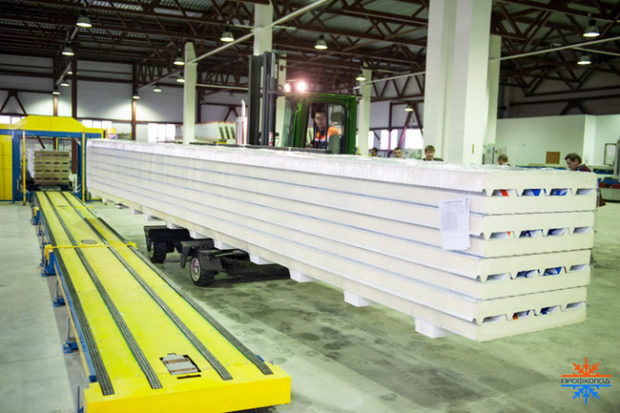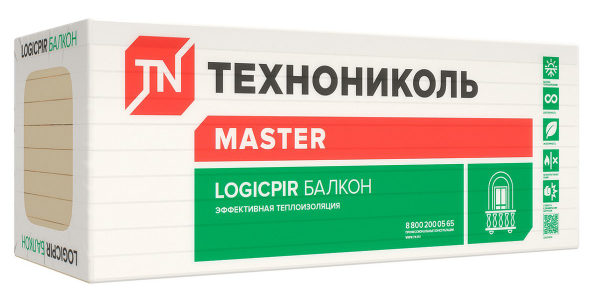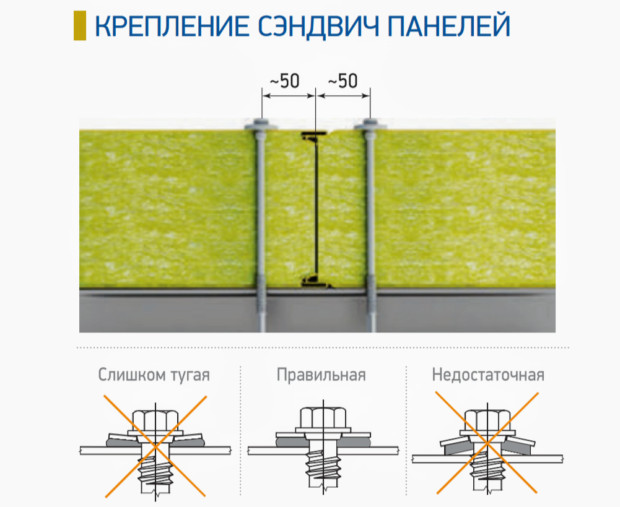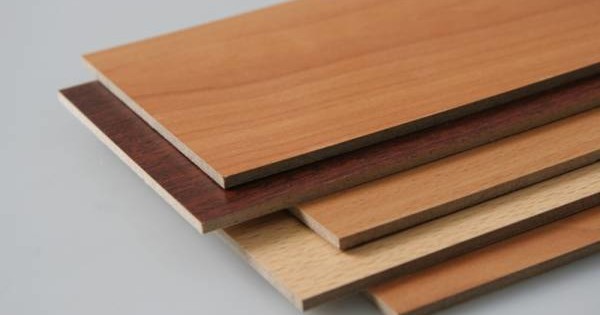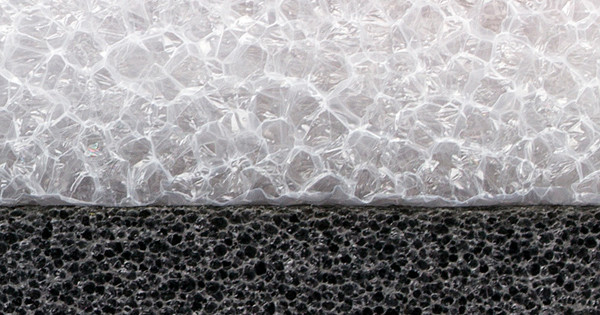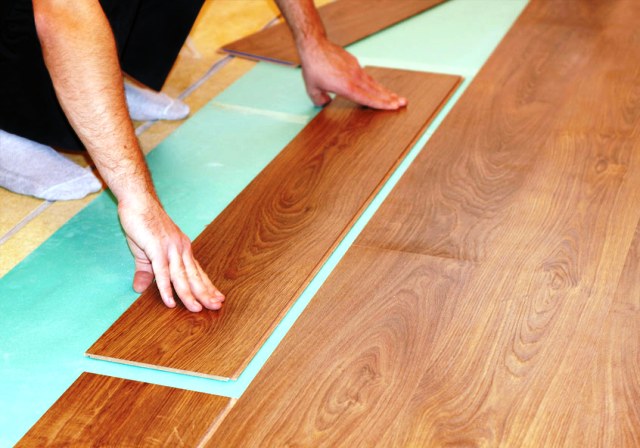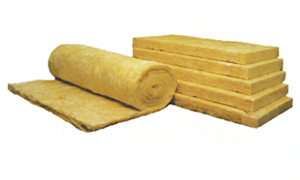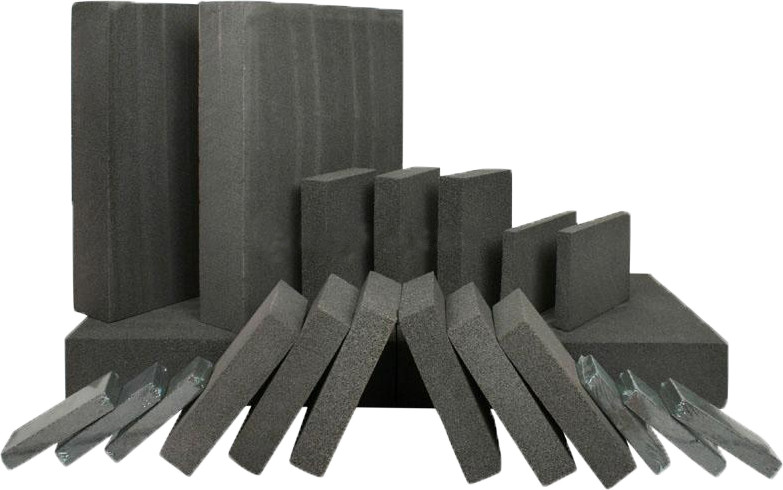8 Tips for Choosing PIR Panels: Features, Price, Manufacturers
The issue of improving energy efficiency and increasing the life of insulation materials is relevant not only for those involved in private construction, but also for residents of ordinary apartments who wish to perform high-quality thermal insulation of their homes. Fortunately relatively wide range of such materials allows you to choose the most optimal option, depending on financial capabilities and scope. Very often used for insulation Styrofoam or mineral woolthat have an affordable cost, but not without flaws. The unique technology and the use of no less unique material called PIR-plates made it possible to produce the perfect insulation, which is used even in rocket science. Today we will deal with the basics of choice feast panels (PIR panels) and consider them in detail specifications, the largest manufacturers on the construction market of Russia and prices on the material.
1. What are PIR panels?
Thanks to the rapid development of construction technology Smart energy-saving homes, which is especially developed abroad, on the Russian market not so long ago there appeared such an interesting version of insulation material as a PIR plate. By the way, over 85% of buildings and facilities in the United States are insulated precisely with the help of this material. In other European countries, this figure reaches 70% and has not been declining for more than 10 years, while according to statistics from construction organizations in Russia this figure does not exceed 5%. From what is made is this effective stuff?
"PIR" stands for polyisocyanurate. It is a complex polymer that resembles in composition polyurethane, but which at the same time is more resistant to various external influences - chemical, thermal, mechanical. The main element which serves as the basis for the production of polyisocyanurate, is methylene diphenyl diisocyanate. At the first stage of production under the influence of high temperatures and various catalysts, this component acquires the ability to react with itself, after which it partially transforms into a tri-isocyanate-isocyanurate chemical compound. The molecule formed as a result of a chemical reaction has a closed spherical structure and is very rigid. This is exactly what provides highly efficient and sustainable properties final product. At the second stage, a polyester polyol and a special foaming component are added to the remaining part of methylene diphenyl diisocyanate and the obtained tri-isocyanate-isocyanurate molecule.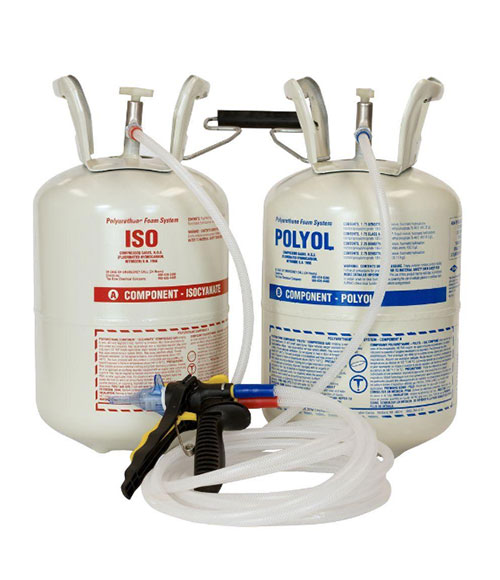 The end result of the chemical reaction that takes place outdoors is solid and durable polymer the volume of which consists of 95% closed cellular pores. The resulting compound begins to lose the stability of molecular bonds when exposed to temperatures reaching 200 ° C. The decay rate of the material also depends on its thickness.For comparison, the molecular bonds of ordinary polyurethane foam (PUR) begin to decompose when exposed to temperatures of 110-120 ° C. Thus, a heat-insulating material with the lowest thermal conductivity is obtained.
The end result of the chemical reaction that takes place outdoors is solid and durable polymer the volume of which consists of 95% closed cellular pores. The resulting compound begins to lose the stability of molecular bonds when exposed to temperatures reaching 200 ° C. The decay rate of the material also depends on its thickness.For comparison, the molecular bonds of ordinary polyurethane foam (PUR) begin to decompose when exposed to temperatures of 110-120 ° C. Thus, a heat-insulating material with the lowest thermal conductivity is obtained. 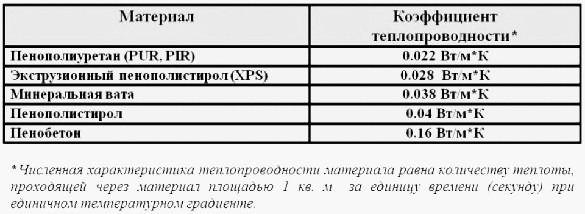 The color of the finished compound may be pure white or slightly yellowish. Now we will consider the manufacturing technology of heat-insulating plates or panels using polyisocyanurate.
The color of the finished compound may be pure white or slightly yellowish. Now we will consider the manufacturing technology of heat-insulating plates or panels using polyisocyanurate.
2. The manufacturing technology of PIR panels and plates
First of all, it should be noted that production is real only in the factory and is quite costly due to the need to purchase special equipment and chemicals. In this regard, finished plates or panels have clear geometric parameters, and faking such a heater is simply unprofitable. The production process itself consists of the following steps:
- The above chemical components, which are initially stored in separate containers, are mixed in certain proportions and sequences in a special reactor;
- The finished polymer in the form of a liquid mixture is fed to the production line, after which a special foaming component is added to it;
- The resulting composition is poured into a metering machine, which through many nozzles delivers the finished polyisocyanurate to the roll material, which will eventually become the bottom of the plate or panel. He, in turn, moves along a special conveyor belt;

- At this stage, it is possible not only to choose a different covering material, but also to control the thickness of the finished plate. Depending on the required value, which lies in the range from 20 to 400 mm, the nozzle serves the composition at a higher or lower speed. That is, the dosage of the composition depends on the final thickness;
- After a blowing agent is added to the composition and the mixture leaves the nozzle, it reacts with open air. In this case, an instant increase in volume occurs;
- After this, a second layer of material is applied on top of the expanded polymer;
- Excess hardened foam, which can protrude on the sides of the covering material, is trimmed with special knives;
- After this, the material is cut into plates of the required size;
- The final stage of production is the final drying of the cut boards.
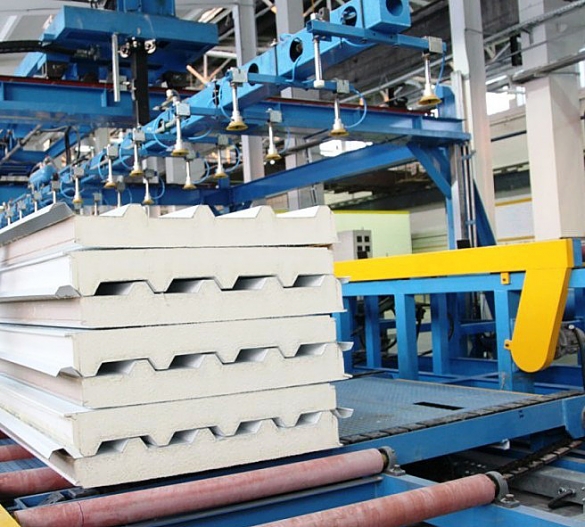
During manufacture, not only the possible thickness and length products but also his width. This parameter directly depends on the technical capabilities of the production line itself and the width of the conveyor belt. However, due to the fact that working with plates with a width of more than 120 cm was not very convenient in practice, many manufacturers try not to exceed this mark.
Polyisocyanurate has enhanced adhesion to any material. This allows you to not use additional bonding components when lining the foam with various base materials. Due to the high “stickiness”, it is also necessary to protect the nozzles of the dosing machine from accidental spray of foam, covering their outer surface with polyethylene. If this is not done, the cured polymer is very difficult to remove from the surface, which can lead to premature failure of expensive equipment.
3. Material specifications
Polyisocyanurate, like any material, has both obvious advantages and disadvantages, more precisely disadvantage. Indeed, for this compound, it is only one - this high price plates or panels with PIR insulation (the average cost of 1 square meter of insulation is about 500 rubles). However, this minus completely compensates for the set positive qualities:
- The material has the most low thermal conductivity. If this indicator for air is 0.024 W / m * k, then for PIR it is 0.022 W / m * k. And this figure remains unchanged throughout the entire life cycle;
- And he, according to the stated figures from the manufacturer, is 50 and more years. Even after the expiration of the conditional period, the material will not settle, will not begin to slide, as, for example, basalt wool, and will not become less durable;
- Elevated level moisture resistance or poor moisture absorption. For example, with increased air humidity in the environment, for example, 95%, the material absorbs no more than 0.09% per day. When fully immersed in water for 24 hours, this figure will be only 2%;
- Low ratio vapor permeability - the average figure is 0.0015 mg / m * h * pa, which means the absolute dryness of the insulation under any operating conditions;

- High strength for compression. For example, a load of 15 t / kV.m. causes a deformation of the material, equal to only 10%;
- Polyisocyanurate is not subject to the process of natural aging. It does not rot, it does not form moldIn addition, the material is an unsuitable environment for the life and reproduction of harmful microorganisms, and is also not suitable for eating by rodents;
- The polymer is resistant to any environmental influences, which makes it possible to use it in various regions, even with the harshest climate. The temperature range is from -70 to + 85 ° C. At the same time, the performance is not a bit worse;
- Small weight - the density of the plate is 30-50 kg / m3;
- Increased fire resistance. PIR is classified as combustible G1-G2, which means that under the influence of open flame the material does not support combustion, but begins to smolder and decay;

- Increased strength - more than 120 kPa;
- Absolute safety for health. PIR refers to environmentally friendly materials and does not emit harmful substances even when heated to high temperatures;
4. What are PIR plates and where are they used?
Thanks to the very high adhesion of polyisocyanurate, it became possible to use various covering materials in the manufacture of plates. This allows you to use them in various construction fields and select the optimal type of insulation according to the characteristics and needs. Any of the following materials is at the same time a limiter for further increasing the volume of the foam and has a thickness of 50 to 100 microns, that is, 0.05 to 0.1 mm.
- PIR plates with a lining of kraft paper. Such a variety is most often used for internal insulation of buildings, for example, for ceiling filing. In turn, the plates serve as a reliable basis for further high-quality finish and have a high level of adhesion;
- Insulation with a lining of fiberglass It is successfully used for both internal and external decoration of buildings. For example, for finishing plastering according to the “wet facade” type system;
- Fiberglass plates and bituminous impregnation used if necessary surfacing waterproofing materials directly to the surface of the insulation. Most often, a similar method is used for high-quality insulation of flat roofs;
- PIR plates with several layers of aluminum foil, or in other words - aluminolamine. They are used for various insulation systems, even for thermal insulation of foundations and loaded floors right on the ground;

- Fireproof plates graphite which is able to protect polyisocyanurate from exposure to open flame for a long time, are used, for example, to isolate the military mode of transport. When a shell hits, the flame from the explosion not only does not spread into the cabin, but the combustion process itself is not supported.

Some manufacturers may manufacture PIR plates with lining from other materials that are required by a particular customer. Besides PIR plates never better suitable for:
- Thermal insulation of balconies or loggias. Unlike other insulating materials, plates can have a minimum thickness, which will save precious centimeters of usable space. In addition, for the installation of plates, a preliminary organization of the wooden frame is not required, and the insulation layer will be uniform. For such purposes, slabs with a close fitting of fiberglass or aluminum laminate are best suited;
- For organization air duct ventilation systems, air heating or air conditioning based on plates coated with aluminum foil. Similar designs have 5-8 times less weight than steel ones. The installation process is much simpler than the construction of steel structures. And in some cases, when there are restrictions on the load on the supporting structures, such a solution is the only one possible. At the same time, PIR plates are fireproof - they do not support and do not spread flame and do not create dangerous molten droplets. And docking with steel elements is done using standard flange connections;

- For facing baths and saunas. Due to the moisture resistance of the material, its environmental friendliness, even when heated to high temperatures and low thermal conductivity, this is one of the ideal insulators;
- For warming not only flat, but also pitched roofs. PIR-slabs can be laid directly on top of wooden rafters to create an integral coating without cold bridges. While the same mineral wool can be laid only between the rafters. At the same time, heat leakage occurs through uncovered wooden logs, which few people think about.

5. Varieties of PIR sandwich panels and their scope
Sandwich panels with insulation PIR are three layer composite building material. Each of its layers performs a specific function. As the sheathing material, smooth or profiled metal sheets are used. Thanks to this, the finished sandwich panel serves not only as a heater, but also as a heat-insulating and structural material. The outer layers of the panel do not need additional decoration. 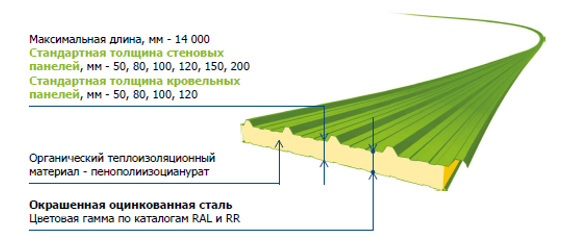 It is worth noting that PIR was originally used only as a kind of insulation material in the manufacture of sandwich panels, and only then began to be used as an independent material in the form of insulation boards. Panel manufacturing technology It differs somewhat from the simpler process of plate production, since the foam is immediately sprayed into the cavity between the two layers of metal, and not applied to one of them, and then coated with the second. As a metal, many manufacturers use galvanized steel with a protective polymer coating (RAL), the color of which can be the most diverse. Or galvanized steel of the 1st grade (Zn). All sandwich panels filled with polyisocyanurate can be divided into two the main groups:
It is worth noting that PIR was originally used only as a kind of insulation material in the manufacture of sandwich panels, and only then began to be used as an independent material in the form of insulation boards. Panel manufacturing technology It differs somewhat from the simpler process of plate production, since the foam is immediately sprayed into the cavity between the two layers of metal, and not applied to one of them, and then coated with the second. As a metal, many manufacturers use galvanized steel with a protective polymer coating (RAL), the color of which can be the most diverse. Or galvanized steel of the 1st grade (Zn). All sandwich panels filled with polyisocyanurate can be divided into two the main groups:
- Wall panels with filler PIR. Many manufacturers pursue the following goals in their manufacture - resistance to atmospheric factors, functionality, versatility and aesthetic appearance. Therefore, the last parameter can vary significantly. Panels can beat as absolutely smooth, and have an interesting profile;
- Roofing PIR-filled panels are made from trapezoidal corrugated sheet. This technique is designed to facilitate the movement of water and moisture down, so that it lingers on the roof for the shortest possible time, and strengthen the strength of the flooring.
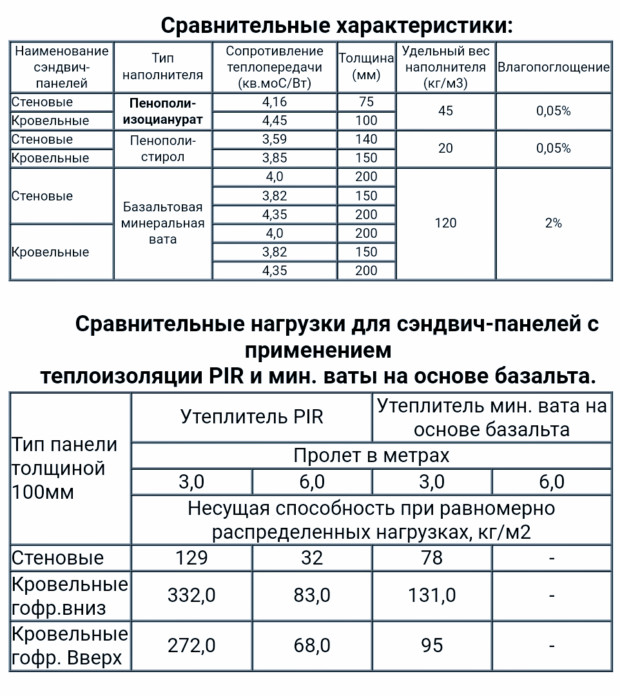 Depending on the manufacturer, they change and geometric characteristics panels. On average, they can have a thickness of 40 to 200 mm. Most have a width of 1000 to 1071 mm for roofing and from 1185 to 1205 mm for wall panels.
Depending on the manufacturer, they change and geometric characteristics panels. On average, they can have a thickness of 40 to 200 mm. Most have a width of 1000 to 1071 mm for roofing and from 1185 to 1205 mm for wall panels. 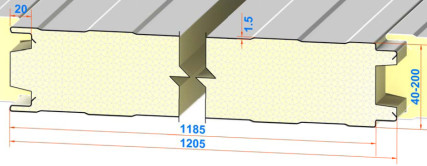 Lengths up to 16,000 mm for roofing and 16,000 mm for wall panels. The panels themselves, regardless of size, retain a relatively low weight.This can significantly reduce the load on the foundation or supporting structures.
Lengths up to 16,000 mm for roofing and 16,000 mm for wall panels. The panels themselves, regardless of size, retain a relatively low weight.This can significantly reduce the load on the foundation or supporting structures. 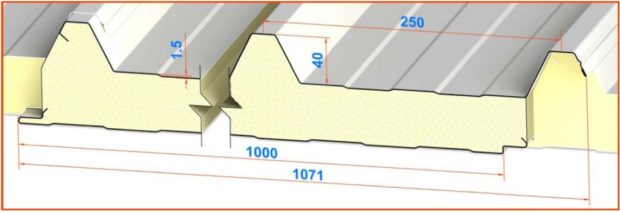
In addition, the installation process is simplified, which occurs with virtually no debris and reduces transportation costs. Sandwich panels may apply as:
- Enclosing or self-supporting structures in the construction of buildings. In this case, a special frame for installation is used. If necessary, a structure erected from panels can be disassembled and moved to another place;
- Facing material for the reconstruction of facades;
- Sound and heat insulating partitions in buildings for various purposes, both industrial and commercial.
Sandwich panels provide:
- rigidity and stability of the structure, as well as increased strength due to the high density of the foam;
- quick commissioning;
- durability,
- chemical resistance;
6. Types of castle connections
It is no secret that the tightness of the joints is one of the prerequisites guaranteeing reliable thermal insulation properties of the coating. Besides reliable joint provides water resistance, fire resistance and reliability of the structure. In this regard, various manufacturers of PIR boards agree that the locking connection must be reliable. The most common types of castle joints of sandwich panels are:
- Classical - the panels are interconnected by means of a “comb-groove”. The inner element is a specially curved part of the lock, while the outer element is a smooth fragment of a metal protective profile. The classic connection allows you to quickly and reliably fix the elements and creates a reliable barrier to the penetration of cold outside air;
- Energy saving the castle in its geometry corresponds to the classic variation of the compound. However, its inner element is additionally equipped with a ridge of heat-insulating material. Thus, we get an additional heat-protective element, which provides not only reliable, but also hermetic fixation of the panels to each other;

- Hidden the lock is a profile of the labyrinth type, both in the outer and inner castle part of the panel. In addition, there is a sample in the heat insulator of the outer layer of the castle joint and a special comb made of metal in the inner part of the castle. The labyrinth structure of the lock allows you to perform the most dense, but at the same time the most complex docking panels. If installed incorrectly, cold bridges may form at the junction point, resulting in large heat losses. The panel is fastened to the frame using an intermediate hidden element. Thus, we get a complete outer surface of the panel without visible connections, which allows us not only to guarantee high aesthetic qualities of the structures, but also to provide all-weather protection due to the absence of through fasteners;
- Also worth noting is the castle. roofing type the design of which has increased strength and tightness due to the use of roofing for flooring, to which increased requirements are put forward. On the bottom of the castle there is a sample in the groove type heat insulator. The upper part is made in the form of a profiled fragment of a protective metal sheet with a comb in the heat insulator. Such a compound reliably protects the joint from the penetration of various precipitation into it.
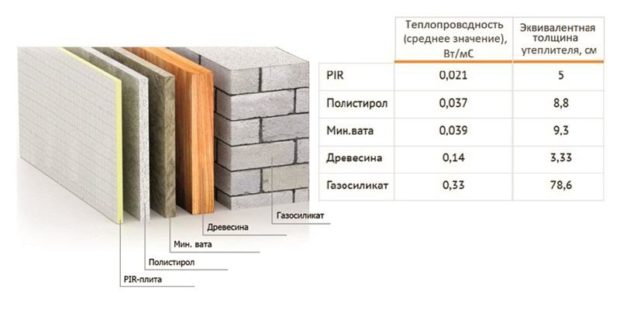 Please note that for self-assembly, you should adhere to all recommendations given in the manufacturer's instructions as accurately as possible.
Please note that for self-assembly, you should adhere to all recommendations given in the manufacturer's instructions as accurately as possible.
7. PIR plate manufacturers and price
After a detailed review of this insulation material, many will probably be interested in where and at what price you can buy PIR plates or panels in the vastness of Russia. Consider the 5 largest companies that were among the first to master this production:
- Company Pirrogroup - Russian manufacturer of insulation on a soft basis. Its production site is located in the city of Saratov and allows the production of 10 million square meters. high-quality PIR insulation per year. The company has modern Italian equipment at its disposal, and the start of production falls on 2014. Today the company "PirroGroup" offers customers 7 brands and varieties of insulation based on PIR: Pirro Membrane - solid panel insulation for roofs with a membrane. Pirro Bitum - a solid plate insulation with close-fitting fiberglass from the bottom and fiberglass impregnated with bitumen from the top. Pirrro Agro - insulation, coated with cramped aluminum foil, designed specifically for use on farms and storage. Facing plates made of foil. The front side has an additional polymer coating to protect the material from the effects of the aggressive environment inherent in livestock farms. Pirro Stucco - thermal insulation in the form of plates, lined with fiberglass with a mineral binder. Intended for stucco facades. Pirro Interior - this type of insulation has a lining of kraft paper and is intended for insulation from the inside. Pirro Universal - insulation boards on both sides with multilayer aluminum. It has a universal scope. Pirro Venti Duct - This material has been specifically developed for the manufacture of thermally insulated ducts. It has a foil coating on both sides. As you can see, the company produces a full range of varieties of PIR plates. Price for products starts from the initial mark of 182 p. / sq.m. The company’s website presents two price lists for review - retail and professional;

- Plant "Izobud." Production facilities include 2 plants for the production of sandwich panels and thermal insulation with an annual program of 4 million square meters. factories are equipped with modern automatic production lines. Energy efficient cookers called ISOPIR comply with European quality standards. In total, the plant produces 4 varieties of heat-insulating boards: ISOPIR K - has a double-sided cladding with kraft paper and is intended for internal wall cladding for dry finishing or as a middle layer of two-layer thermal insulation. It is also used for floor and foundation insulation. ISOPIR L - has an aluminum foil lining. It is used for facing rooms with a high level of humidity, for example, for baths, saunas. Also suitable for insulation of hangars, warehouses, basements, ceilings and roofs. attic spaces. ISOPIR S - the lining of the lower layer is made of kraft paper. The top layer has a fiberglass coating with the addition of graphite and a fire retardant coating. It is used for external cladding of facades and walls or as an additional fire protection. The most effective material for the isolation of rooms with a high level of fire safety. ISOPIR F - has a double-sided cladding with aluminum foil. It is used for insulation of ventilation shafts and pipelines or for thermal insulation of external facades for plaster systems. Prices on the manufacturer’s website are not indicated;

- ProfHolod - One of the largest manufacturers of energy-saving materials and structures. It manufactures its products on modern European equipment. In 2017, sandwich panels with PIR insulation from this manufacturer were tested according to the European standard, which confirmed the high quality of the products. Price for goods starts from 1452 rubles .;

- In 2015, one of the most modern plants for the production of PIR insulation sandwich panels under the ISOPAN brand was opened in the Volgograd Region. Plant ISOPAN RUS, located in the city of Volzhsky, it boasts the production of panels that have unique indicators of energy efficiency in the harsh Russian climate;

- Company "TechnoNikol » - one of the largest manufacturers of effective thermal insulation materials. It produces plates based on PIR insulation under the LOGICPIR logo. At the moment, a universal variety of plates is produced, plates for insulation of balconies, wall plates, floor, for insulation of baths and saunas, for insulation of pitched roofs. Price policy affordable - from 283 rubles / sq.m.

8. Brief recommendations for self-installation of insulation
Self-laying of panels with PIR insulation is quite simple. Should stick simple rules:
- Lay the plates back to back;
- The connection is fixed with a fastener;
- Mounting to the base should be done with dowels with wide caps;
- To achieve maximum strength and tightness, it is allowed to pre-apply the adhesive to the base.
Recommendations for laying sandwich panels:
- Since the panels are an element that is already completely ready for installation, application of the adhesive composition to the substrate is not required;
- The plates are interconnected using a lock connection strictly according to the instructions;
- Then you can blow out the joints with foam to create a complete tightness of the structure;
- The panels are mounted on the frame using bolts and steel sheet substrates. The substrate should be wide enough, and the thickness of the metal should be at least 3 mm. This will provide the necessary rigidity of any constructed structure;
- The roofing variety of PIR boards has a foil-coated or kraft-covered bottom and a metal-protected top. The metal casing is in the form of a standard slate, which allows to achieve complete tightness of the roofing. Plates are fastened using roofing bolts, which should enter the plane strictly perpendicular to it. Tilted mounts are considered defective.

Slabs for insulation of floors are also available. They are a square or rectangle, equipped on all sides with a lock connection. Moreover, the installation process does not require the use of additional fasteners. A damper tape is laid around the perimeter of the room, after which you can proceed to the direct laying of the plates. On top of such a flooring, you can perform a dry or wet cement screed or lay the “warm floor” system.